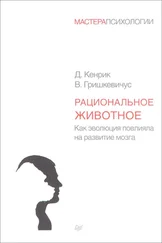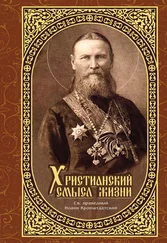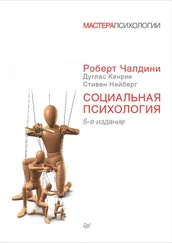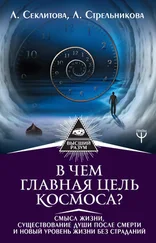Dunn, E. W., Aknin, L. B., & Norton, M. I. (2008). Spending money on others promotes happiness. Science, 319, 1687-1688.
Faulkner, J., Schaller, M., Park, J. H., & Duncan, L. A. (2004). Evolved disease avoidance mechanisms and contemporary xenophobic attitudes. Group Processes & Intergroup Relations, 7, 333-353.
Fessler, D. M. T., Eng, S. J., and Navarrete, C. D. (2005). Elevated disgust sensitivity in the first trimester of pregnancy: Evidence supporting the compensatory prophylaxis hypothesis. Evolution & Human Behavior, 26, 344-351.
Fessler, D. M. T., & Navarrete, C. D. (2004). Third-party attitudes toward sibling incest: Evidence for Westermarck’s hypothesis. Evolution and Human Behavior, 25, 277-294.
Galambos, R., & Griffin, D. R. (1941). Obstacle avoidance by flying bats: The cries of bats. Journal of Experimental Zoology, 89, 475-490.
Gangestad, S. W., Haselton, M. G., & Buss, D. M. (2006). Evolutionary foundations of cultural variation: Evoked culture and mate preferences. Psychological Inquiry, 17, 75-95.
Gangestad, S. W., Simpson, J. A., Cousins, A. J., Glarver-Apgar, C. E., & Christensen, N. P. (2004). Women’s preferences for male behavioral displays change across the menstrual cycle. Psychological Science, 15, 203-207.
Garcia, J., & Koelling, R. A. (1966). Relation of cue to consequence in avoidance learning. Psychonomic Science, 4, 123-124.
Gardner, H. (1985). The mind's new science: A history of the cognitive revolution. New York, NY: Basic Books.
Gigerenzer, G., & Selten, R. (2001). Bounded rationality: The adaptive toolbox. Boston, MA: MIT Press.
Gilbert, D. T. (2007). Stumbling on happiness. New York, NY: Vintage Books.
Glass, A. L., & Holyoak, K. J. (1986). Cognition (2nd ed.). New York, NY: Random House.
Gould, S. J., & Lewontin, R. (1979). The spandrels of San Marcos and the panglossian paradigm: A critique of the adaptationist programme. Proceedings of the Royal Society of London, B, 205, 581-598.
Gray, P. B., Campbell, B. C., Marlowe, F. W., Lipson, S. F., & Ellison, P. T. (2004). Social variables predict between-subject but not day-to-day variation in the testosterone of U.S. men. Psycho-neuronedocrinology, 29, 1153-1162.
Gray, P. B., Chapman, J. F., Burnham, T. C., McIntyre, M. H., Lipson, S. F., & Ellison, P. T. (2004). Human male pair bonding and testosterone. Human Nature, 15, 119-131.
Gray, P. B., Kahlenberg, S. M., Barrett, E. S., Lipson, S. F., & Ellison, P. T. (2002). Marriage and fatherhood are associated with lower testosterone in males. Evolution & Human Behavior, 23, 193-201.
Griskevicius, V., Cialdini, R. B., & Kenrick, D. T. (2006). Peacocks, Picasso, and parental investment: The effects of romantic motives on creativity. Journal of Personality & Social Psychology, 91, 63-76.
Griskevicius, V., Goldstein, N., Mortensen, C., Cialdini, R. B., & Kenrick, D. T. (2006). Going along versus going alone: When fundamental motives facilitate strategic (non)conformity. Journal of Personality & Social Psychology, 91, 281-294.
Griskevicius, V., Tybur, J. M., Gangestad, S. W., Perea, E. F., Shapiro, J. R., & Kenrick, D. T. (2009). Aggress to impress: Hostility as an evolved context-dependent strategy. Journal of Personality & Social Psychology, 96, 980-994.
Griskevicius, V., Tybur, J. M., Sundie, J. M., Cialdini, R. B., Miller, G. F., & Kenrick, D. T. (2007). Blatant benevolence and conspicuous consumption: When romantic motives elicit strategic costly signals. Journal of Personality & Social Psychology, 93, 85-102.
Gutierres, S. E., Kenrick, D. T., & Partch, J. (1999). Contrast effects in self assessment reflect gender differences in mate selection criteria. Personality & Social Psychology Bulletin, 25, 1126-1134.
Haidt, J. (2006). The happiness hypothesis: Finding modem tmth in ancient wisdom. New York, NY: Basic Books.
Harpending, H. (1992). Age differences between mates in Southern African pastoralists. Behavioral & Brain Sciences, 15, 102-103.
Hart, C. W. M., & Pillig, A. R. (1960). The Tiwi of North Australia. New York, NY: Holt.
Haselton, M. G., & Buss, D. M. (2000). Error management theory: A new perspective on biases in cross-sex mind reading .Journal of Perspnality & Social Psychology, 78, 81-91.
Haselton, M. G., & Gangestad, S. W. (2006). Conditional expression of women’s desires and men’s mate guarding across the ovulatory cycle. Hormones and Behavior, 49, 509-518.
Hatfield, E., Traupmann, J., Sprecher, S., Utne, M., & Hay, J. (1985). Equity and intimate relationships: Recent research. In W. Ickes (Ed.), Compatible and incompatible relationships (pp. 1-27). New York, NY: Springer-Verlag.
Helson, Н. (1947). Adaptation-level as frame of reference for prediction of psychophysical data. American Journal of Psychology, 60, 1-29.
Henrich, J., & Boyd, R. (1998). The evolution of conformist transmission and the emergence of between-group differences. Evolution and Human Behavior, 19, 215-242.
Hill, J. (1984). Prestige and reproductive success in man. Ethology & Sociobiology, 5, 77-95.
Hill, K., & Hurtado, M. (1989). Hunter-gatherers of the new world. American Scientist, 77, 437-443.
Holland, J. H. (1998). Emergence: From chaos to order. Reading, MA: Addison-Wesley.
Hölldoebler, В., & Wilson, E. O. (199A). Journey to the ants: A story of scientific exploration. Cambridge, MA: Harvard University Press.
Hölldoebler, В., & Wilson, E. O. (2008). Superorganism: The beauty, elegances, and strangeness of insect societies. New York, NY: Norton.
Hughes, B. O., & Dewar, W. A. (1971). A specific appetite for zinc in zinc-depleted domestic fowls. British Poultry Science, 12, 255-258.
Hughes, B. O., & Wood-Grush, D. G. M. (1971). Investigations into specific appetites for sodium and thiamine in domestic fowls. Physiology and Behavior, 6, 331-339.
James, W. (1890). The principles of psychology (Vol. 1). New York, NY: Holt.
Jankowiak, W. R., & Fischer, E. F. (1992). A cross-cultural perspective on romantic love. Ethnology, 31, 149-155.
Johnson, D., & Bering, J. (2006). Hand of God, mind of man: Punishment and cognition in the evolution of cooperation. Evolutionary Psychology, 4, 219-233.
Kahneman, D., & Tversky, A. (1979). Prospect theory: An analysis of decision under risk. Eco-nometrica, 47( 2), 263-291.
Kahneman, D., & Tversky, A. (1991). Loss aversion in riskless choice: A reference dependent model. In D. Kahneman & A. Tversky (Eds.), Choices, values, and frames (pp. 143-158). Cambridge, England: Cambridge University Press.
Kaplan, H. S., & Gangestad, S. W. (2005). Life history and evolutionary psychology. In D. M. Buss (Ed.), Handbook of evolutionary psychology (pp. 68-95). New York, NY: Wiley.
Karr, M. (2005). The liars' club: A memoir. New York, NY: Penguin.
Kenrick, D. T. (1995). Evolutionary theory versus the confederacy of dunces. Psychological Inquiry, 6, 56-61.
Kenrick, D. T. (2001). Evolution, cognitive science, and dynamical systems: An emerging integrative paradigm. Current Directions in Psychological Science, 10, 13-17.
Kenrick, D. T. (2006a). A dynamical evolutionary view of love. In R. J. Sternberg & K. Weis (Eds.), The new psychology of love (pp. 15-34). New Haven, CT: Yale University Press.
Kenrick, D. T. (2006b). Evolutionary psychology: Resistance is futile. Psychological Inquiry, 17, 102-108.
Kenrick, D. T. (in press). Evolutionary social psychology: From animal instincts to human societies. In A. Kruglanski, P. A. M. VanLange, & T. Higgins, Handbook of theory in social psychology. Newbury Park, CA: Sage.
Читать дальше












